Kashgar Travel Guide
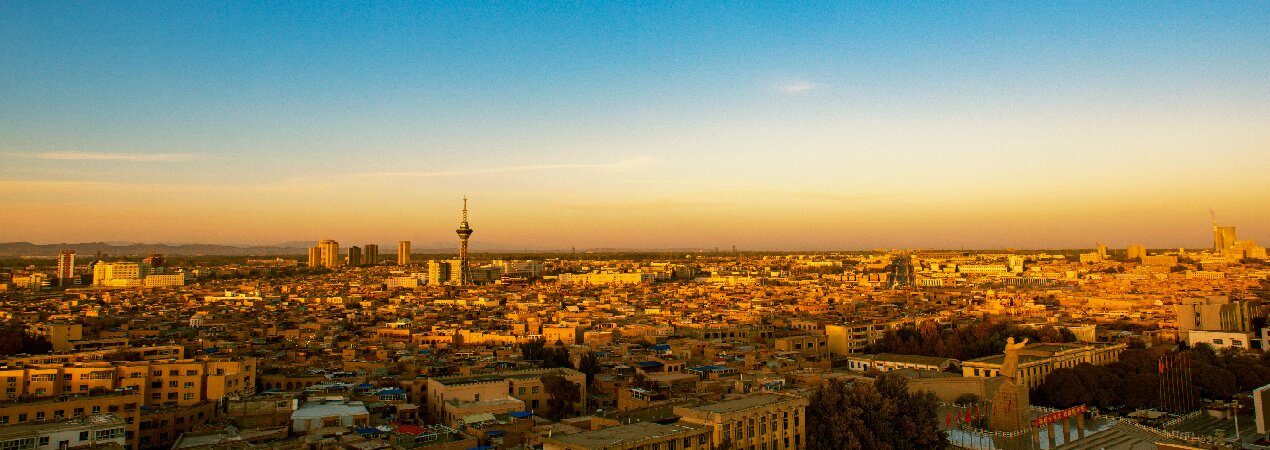
Kashgar is the westernmost city in China, facing the Tarim Basin to the east and leaning against the Pamir Plateau to the west. Located in the heart of Central Asia, Kashgar is constrained by its geographical environment and belongs to the warm temperate continental arid climate zone. The area has four distinct seasons, with long sunshine hours, large annual and daily temperature variations, little precipitation, and strong evaporation.
- English Name: Kashgar
- Chinese Name: 喀什(kā shí)
- Government: A prefecture - level city in Xinjiang Uygur Autonomous Region
- Location: Southwestern Xinjiang, China (Approximately 39°24′N - 40°31′N, 73°20′E - 79°57′E)
-
Area code & Zip Code:
Area Code: 0998; Zip Code: 844000 - Airports:Kashgar Laining Airport (KHG)
-
Railway Stations:
Kashgar Railway Station, Shache Railway Station, Bachu Railway Station, Yecheng Railway Station, Yingjisha Railway Station, Zepu Railway Station, Shule Railway Station -
Suburban Districts:
Kashgar City, Shufu County, Yuepu'er County, Jiashi County, Bachu County, Yecheng County, Shache County, McMahon County, Zepu County, Yutian County, Luopu County, Qiemo County - Population: About 4.5 million
Best Time to Visit Kashgar
The best time to visit Kashgar is from August to October. During this period, the climate in Kashgar is pleasant, which is the best time to visit it. You can take a leisurely stroll in the alleys of the ancient city, or visit the Id Kah Mosque to gain a deeper understanding of the local history and culture. In addition, August to October is also the season for the harvest of melons and fruits in Kashgar, and you can taste fresh and delicious melons and fruits.
What to See
1. Xiangfei Garden: The architectural style of Xiangfei Garden is mainly a combination of ethnic characteristics and modern elements, with a strong Islamic style. It is magnificent and majestic, yet fresh and elegant. Among them, the Xiangfei Tomb is the largest dome-style building in Xinjiang.
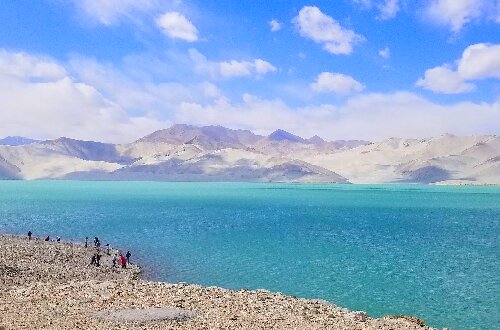 White Sand Lake in the Pamir Scenic Area
White Sand Lake in the Pamir Scenic Area2. Pamir Scenic Area: The Pamir Scenic Area is rich in unique tourism resources. It features the world-famous Stone City Ruins, the fascinating Alar Golden Grassland National Wetland Park, distinctive Tajik folk customs, the time-honored Silk Road culture, and precious and rare plateau organisms. The planned total area of the Pamir Scenic Area is 3.1 square kilometers. In 2014, it was awarded the title of China's first "International Plateau Customs Tourism Destination".
3. Kashgar Ancient City: The Kashgar Ancient City is located in the heart of Kashgar. Boasting a long history, rich culture, and unique customs, the ancient city features traditional dwellings with a history of over a hundred years. It stands as the best-preserved labyrinthine urban block in China with typical architectural styles of the ancient Western Regions. As an open-access tourist attraction, the modern Kashgar Ancient City vividly showcases the family life, ethnic customs, traditional handicrafts, and flavorful cuisine of the Uyghur people.
Recommended attractions:
How to Get There
Kashgar Laining Airport (KHG) has a rich network of routes, operating 19 airlines. It offers direct flights to major cities such as Beijing, Shanghai and Guangzhou, connecting 46 domestic cities and 25 cities within Xinjiang. It has also opened routes to international cities like Islamabad.
How far is Kashgar from Major Cities
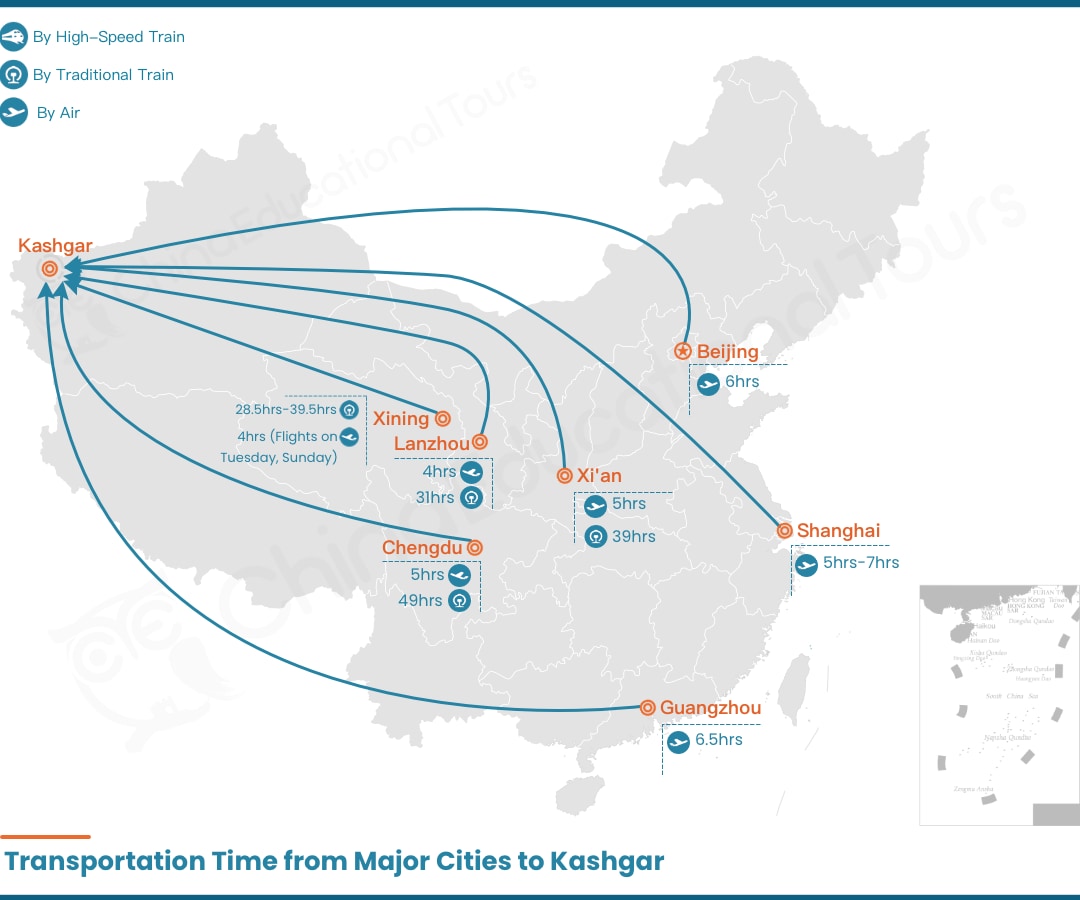
| Cities | Distance from Kashgar (km) | By Air to Kashgar | By High-Speed Railway to Kashgar | By Traditional Train to Kashgar |
|---|---|---|---|---|
| Beijing | 3977 | 6hrs | No direct high-speed trains | No direct traditional trains |
| Shanghai | 5083 | 5hrs-7hrs | No direct high-speed trains | No direct traditional trains |
| Guangzhou | 5015 | 6.5hrs | No direct high-speed trains | No direct traditional trains |
| Xining | 2901 | 4hrs (Flights on Tuesday, Sunday) | No direct high-speed trains | 28.5hrs-39.5hrs |
| Xi'an | 3727 | 5hrs | No direct high-speed trains | 39hrs |
| Chengdu | 3477 | 5hrs | No direct high-speed trains | 49hrs |
| Lanzhou | 3108 | 4hrs | No direct high-speed trains | 31hrs-43hrs |
How far is Kashgar from Other Xinjiang Cities
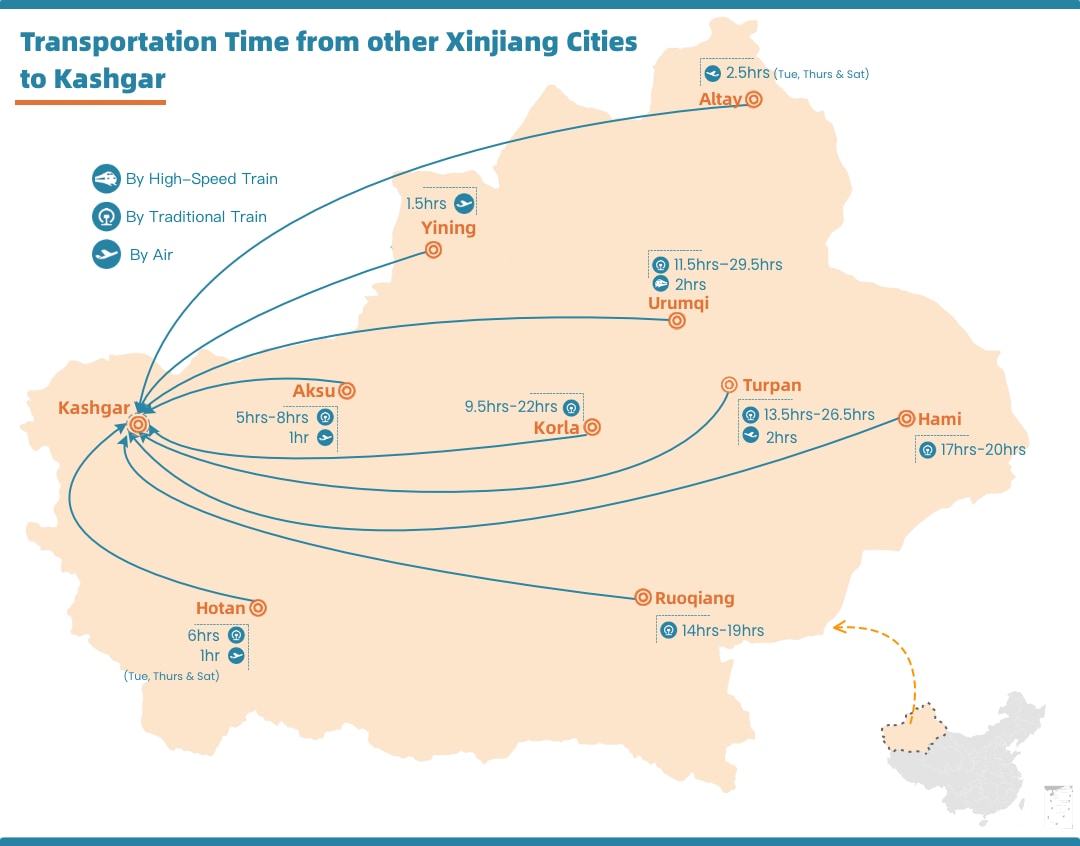
| Cities | Distance from Kashgar (km) | By Air to Kashgar | By High-Speed Railway to Kashgar | By Traditional Train to Kashgar |
|---|---|---|---|---|
| Altay | 1973 | 2.5hrs (Flights on Tuesday, Thursday and Saturday) | No direct high-speed trains | No direct traditional trains |
| Hotan | 498 | 1hr (Flights on Tuesday, Thursday and Saturday) | No direct high-speed trains | 6hrs |
| Aksu | 461 | 1hr | No direct high-speed trains | 5hrs-8hrs |
| Urumqi | 1471 | 2hrs | No direct high-speed trains | 11.5hrs–29.5hrs |
| Turpan | 1353 | 2hrs | No direct high-speed trains | 13.5hrs-26.5hrs |
| Korla | 1009 | No direct flights | No direct high-speed trains | 9.5hrs-22hrs |
| Hami | 1795 | No direct flights | No direct high-speed trains | 17hrs-20hrs |
| Yi'ning | 1291 | 1.5hrs | No direct high-speed trains | No direct traditional trains |
Gourmet Food Recommendations
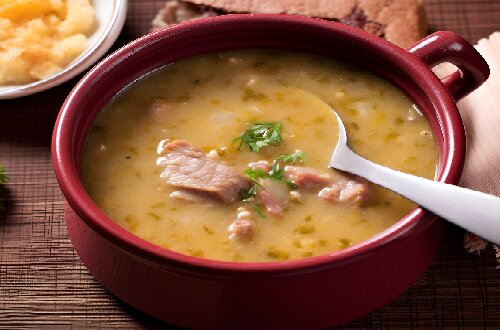 Jar Meat
Jar MeatYogurt Zongzi refers to glutinous rice dumplings that are flattened, poured with thick yogurt, and then drizzled with honey or syrup. It tastes both hot and cold, sour and sweet, and is a street food loved by the people of Kashgar.
Jar Meat is made by putting mutton or lamb chops into an enamel jar, adding carrots, raisins, red dates and other ingredients, and then slowly stewing them. The mutton is delicious and the soup is fragrant. It is one of the favorite breakfasts of the people of Kashgar.
Hot and Spicy Sheep's Feet are made with sheep's feet as the main ingredient, stewed with various spices and peppers. The sheep's feet are soft and sticky, and the taste is spicy and delicious. They are one of the specialties of Kashgar.
Souvenir and Shopping
Kashgar Earthenware: Kashgar earthenware is famous for its exquisite craftsmanship and unique ethnic style, including flowerpots, small ornaments, aromatherapy bottles, etc. These products are not only practical but also of high artistic value.
Floral Hats: Kashgar floral hats are exquisitely made, using traditional ethnic embroidery, cross-stitch and other methods. They are precious gifts for relatives and friends.
Dried Fruits: Kashgar's dried fruits such as raisins, dried apricots, dried dark plums, dried Hami melons, as well as various nuts like walnuts and badam, are all very popular local specialties, suitable for giving as gifts to relatives and friends.